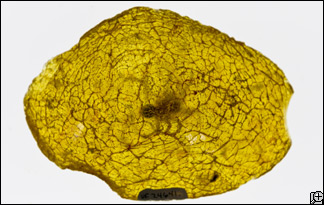
Ancient Creepy Crawly
If it seems like
spiders, scorpions, ticks and mites have been around forever, it's because they nearly have, according to new genetic research that found
these arachnids first emerged at least 400 to 450 million years ago.
The study, published in the latest issue of
Experimental and Applied Acarology, extends the known world presence of these creepy crawlies by over 200 million years. The oldest fossil spider is 125 to 135 million years old, while the oldest
fossil scorpion is around 200 million years old.
These invertebrates could even have emerged much earlier than this latest study determined.
"A horseshoe crab dating to 475 million years ago provided one of our anchor dates, and this crab actually looked quite modern, as did a Devonian period (416 to 359 million years ago) mite that was one very modern-looking mite," co-author Marjorie Hoy told
Discovery News.
Hoy, a University of Florida entomologist, added, "I don't think the individuals just suddenly appeared on Earth, so it's likely these invertebrates are even older than we estimated."
She and colleague Ayyamperumal Jeyaprakash, who is a University of Florida senior biological scientist, obtained complete genetic sequences for the mitochondria of 25 different invertebrates, including
four spiders, two mites, three scorpions, soft and hard ticks, and other members of an arachnid group that's known as the Chelicerata lineage.
Jeyaprakash identified genetic sequences common to the organisms. The researchers then used high tech computer programs to calculate how much time passed since the sequences evolved from a common origin. Since such sequences can be very long, computer processing times for some analyzes required up to a month on the scientists' well-used MacPro.
The study represents the first large-scale attempt to use genetic methods to make projections about when arachnids first evolved.
In addition to the age discovery, at least two other major findings about spiders, scorpions, ticks and mites emerged from the research.
The first is that these invertebrates likely did indeed all descend from a common ancestor, which may have lived in the ocean, since most very early life forms existed in water.
The second is that dinosaurs probably weren't the first animals that could have used a flea or, in this case,
mite and tick collar.
"The general consensus is that mites and ticks became
parasites on reptiles, but maybe this happened on amphibians, since they were around when ticks emerged," Hoy said, pointing out that amphibians to this day can be plagued by parasites.
Ohio State University entomologist Hans Klompen, who studies mite evolution, said the new findings would help researchers like him in future.
"I think this is a great start," he said. "Now we have something specific to test, and that's always a good thing."
Both he and the University of Florida scientists hope that even more fossils and genetic information will further pinpoint when arachnids emerged, ideally providing specific time frames for particular species within the group.
"Ours is the first divergence time estimate for spiders, scorpions, mites and ticks, but it won't be the final word on the matter," Hoy said. "The main point is that these arachnids are far more ancient than any of us had ever before realized."

Reader Comments
to our Newsletter